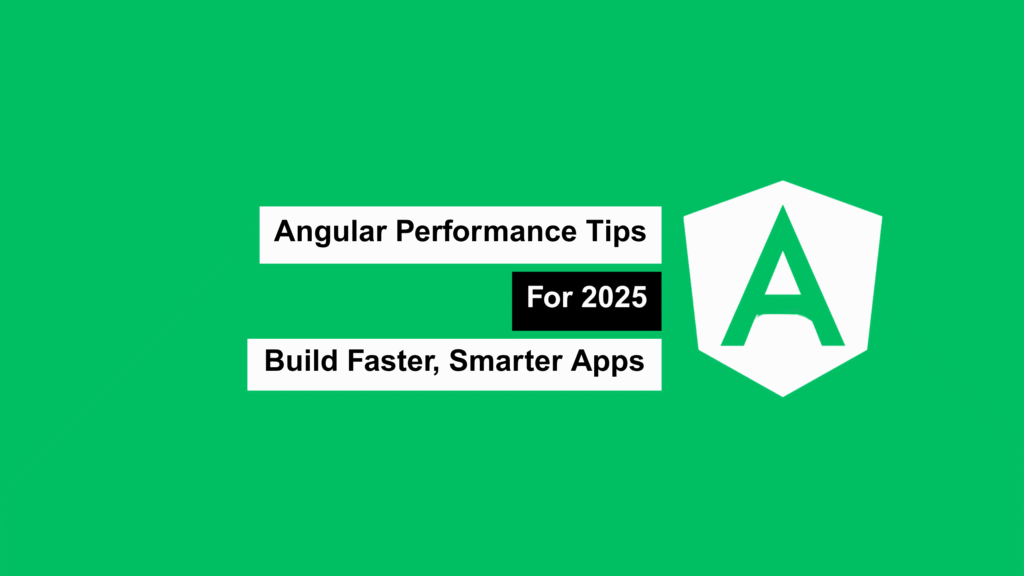
In today’s web landscape, performance isn’t just a “nice-to-have” — it’s the baseline. Users expect lightning-fast experiences, and as Angular continues to evolve, so should the way we build and optimize our apps.
Here are some go-to strategies I use to squeeze the best performance out of Angular applications in 2025:
1. 🔄 Switch to OnPush Change Detection
Angular’s default change detection strategy checks every component in the tree — even when nothing has changed. That’s overkill for most apps. Switching to OnPush tells Angular to only check when inputs change or observables emit.@Component({
selector: 'app-optimized',
templateUrl: './optimized.component.html',
changeDetection: ChangeDetectionStrategy.OnPush
})
export class OptimizedComponent {}
✅ Tip: Use this with pure presentational components to cut unnecessary re-renders.
2. 🧠 Smart vs. Dumb Components
Keep your components focused. Separate “smart” (stateful, logic-heavy) components from “dumb” (pure UI) ones. This structure improves testability, readability, and helps reduce complexity over time.
- Smart Component: Talks to services, handles data.
- Dumb Component: Gets data via
@Input(), emits via@Output().
3. ⚡ Embrace Signals for Reactive State
Signals are Angular’s modern take on reactive state management — super intuitive and fast. Unlike traditional observables, signals update automatically and only when needed, giving you granular control over the UI.
import { signal } from '@angular/core';
const count = signal(0);
function increment() {
count.update(value => value + 1);
}
🔍 Why it matters: Less boilerplate, more performance. Think of signals as reactive primitives built right into Angular.
4. 🧳 Lazy Load Like a Pro
Why load the entire app up front when users only need a slice of it? Lazy loading improves the initial load time and keeps your bundle lean.
const routes: Routes = [
{
path: 'dashboard',
loadChildren: () =>
import('./dashboard/dashboard.module').then(m => m.DashboardModule)
}
];
Pro move: Combine lazy loading with route-level preloading for even better UX.
5. 🌲 Use Tree-Shakable Services
Angular supports tree-shaking — but only if your services are set up correctly. Use providedIn: 'root' to ensure services are included only if used.
@Injectable({ providedIn: 'root' })
export class DataService {}
Result: Smaller bundles, faster load times, cleaner dependency graphs.
6. ⚙️ Ahead-of-Time (AOT) Compilation
AOT compiles your templates and components before the app runs in the browser. This improves startup performance and catches template errors during build time.
ng build --prod --aot
It’s enabled by default in production builds, but double-check to be sure.
🧠 Final Thoughts
Performance tuning in Angular isn’t about chasing benchmarks — it’s about creating a smoother, more delightful user experience.
Start by:
- Changing how Angular detects updates (
OnPush, Signals), - Re-architecting your component design,
- Optimizing what gets bundled and when it loads.
Angular 2025 brings all the tools you need — now it’s just about using them smartly.
